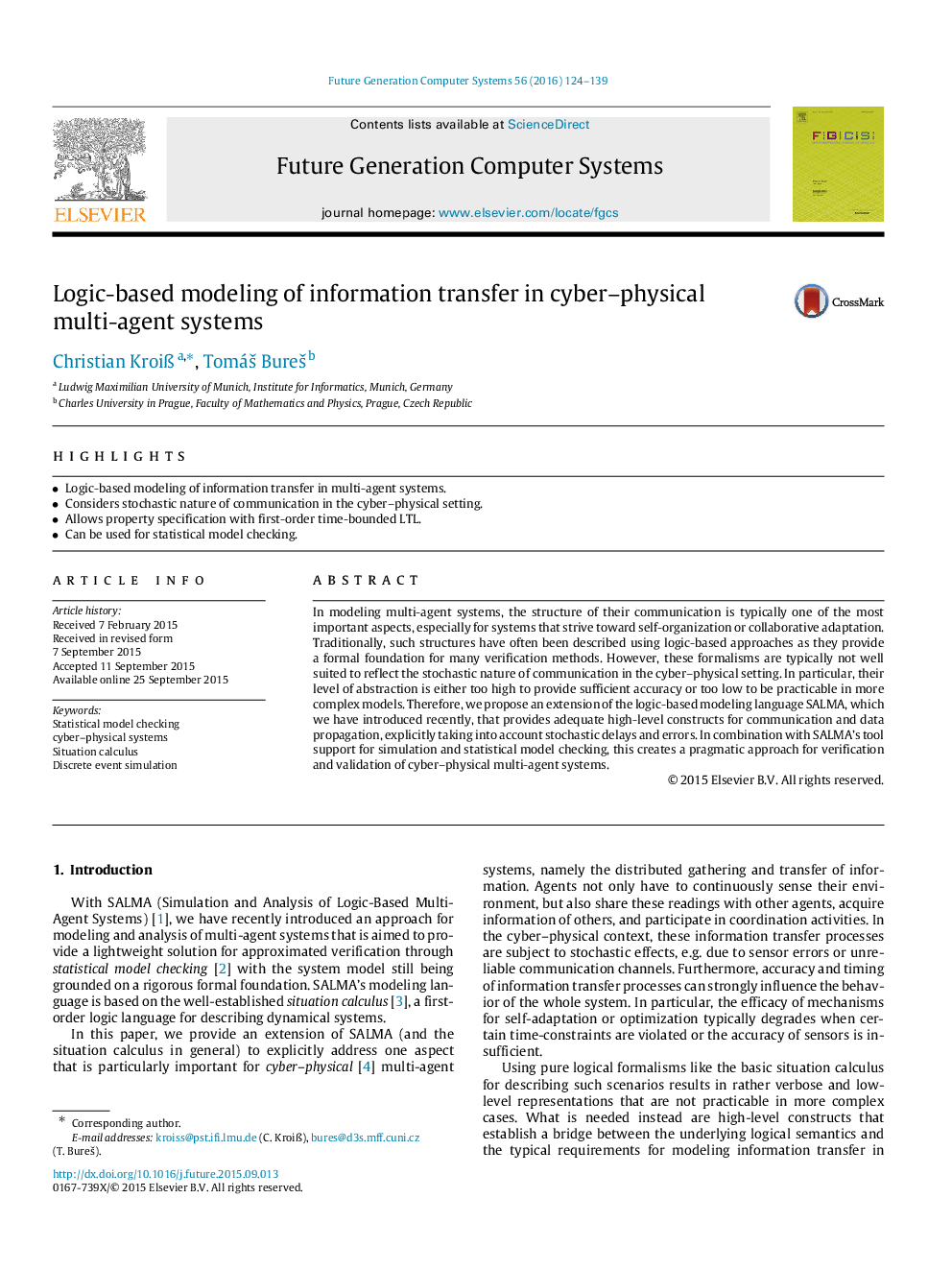| Article ID | Journal | Published Year | Pages | File Type |
|---|---|---|---|---|
| 424876 | Future Generation Computer Systems | 2016 | 16 Pages |
•Logic-based modeling of information transfer in multi-agent systems.•Considers stochastic nature of communication in the cyber–physical setting.•Allows property specification with first-order time-bounded LTL.•Can be used for statistical model checking.
In modeling multi-agent systems, the structure of their communication is typically one of the most important aspects, especially for systems that strive toward self-organization or collaborative adaptation. Traditionally, such structures have often been described using logic-based approaches as they provide a formal foundation for many verification methods. However, these formalisms are typically not well suited to reflect the stochastic nature of communication in the cyber–physical setting. In particular, their level of abstraction is either too high to provide sufficient accuracy or too low to be practicable in more complex models. Therefore, we propose an extension of the logic-based modeling language SALMA, which we have introduced recently, that provides adequate high-level constructs for communication and data propagation, explicitly taking into account stochastic delays and errors. In combination with SALMA’s tool support for simulation and statistical model checking, this creates a pragmatic approach for verification and validation of cyber–physical multi-agent systems.
